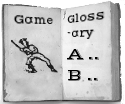Leik Mjul
| Game | Leik Mjul |
|---|---|
| Game Family | Baseball |
| Location | Estonia |
| Regions | Europe |
| Eras | Predecessor, 1800s |
| Invented | No |
| Tags | |
| Description | Leik mjul ("play ball") was a game played on the island of Runo (now called "Ruhnu" and part of Estonia). Little is known about it, but some suggest that it was like rounders. Edwin Mehl wrote in 1949 that this game evolved from a game taught to locals by the crew of a British ship stranded on the island in 1846. There are indications that it was still played in 1920. Historically occupied by Swedes, the island was transferred to Estonia after World War II. Isak Lidstrom, a graduate student at Malmo University in Sweden, reports in March 2016 that he is conducting research on the game. ------- Isak's research report, on April 8, 2016: Hello! "After a comparison between the rules of rounders in David Block's appendix (The boy's own book 1828 and The every boy's book 1841) and leik mjul om Runö, the games seems very similar. In the Runö game, the pitcher and the batter should stand in a circle, and if the batter is successful, he can run to the first base, the second base, third base in order to reach the circle again. I tried to make a primitive sketch based on the instructions written in Klein´s book: {this sketch does not transfer successfully yet; it displays a field diagram indicating counterclockwise running, a distance of 7 meters from home to first and third to home, and 35 meters from first to second and second to third. The pitcher stands about 7 to 10 meters from the batsman.} A Pitcher B Batter C First base/stick (fårst stakan) D Second base/stick (an stakan) E Third base/stick (trejje stakan) --- "This procedure from the 1841 rules, "In most places it is usual when all the players but one have been caught or struck out, for him to take the “rounder” — i.e., strike the ball so far that he can run round to all the bases and then home before the opposite party can get the ball, and “ground” it, or throw it down on the “home” has its counterpart in the Runö game when the last man cries "Nu slår jag runders" (Now I bat runders). [Isak's remaining questions] -- "I have one question about Mehl's article "Baseball in the stone age". Two times in the article (p. 152, 157) Mehl mentions ball games on Runö, referring to Per Maigaard. In the foot notes, though, Mehl doesn't cite any written work by Maigaard. In the two articles I have found ("Slagboldspillenes historie", and the article that is published as an appendix in David's book) Maigaard never mentions the Runö ball games. Do you know if there is any other text or books where Maigaards deals with ball games? Or is it perhaps the case that Mehl cites Maigaard through oral communication? "I find this detective work very exiting and hopefully the work will result in an article published in some history or folklore journal in Sweden, after working out the name of the ship that took rounders to Runö. Do you think that there might be an international interest in the case, so that it would be worth to write an article in english? I saw for example that there is a journal named NINE: A Journal of Baseball History and Culture. Kind regards, Isak PS -- This in most places is usual when all the players but one have been caught or struck out, for him to take the “rounder” — i.e: strike the ball so far that he can run round to all the bases and then home before the opposite party can get the ball, and “ground” it, or throw it down on the “home.or struck out, for him to take the “rounder” — i.e.: ., strike the ball so far that he can run round to all the bases and then home before the opposite party can get the ball, and “ground” it, or throw it down on the “home.”
|
| Sources | Edwin Mehl, "Baseball in the Stone Age," [citation?] Email from Isak Lidstrom to David Block, March 24, 2016. Email from Isak, April 8, 2016 Se also chronology entry 1846.14, http://protoball.org/1846.14.
|
| Source Image | [[Image:|left|thumb]] |
| Comment | Some questions from Protoball:
Can you say something about the source of the account you are comparing to the 1828 and 1841 accounts?
Edit with form to add a comment |
| Query | Edit with form to add a query |
| Has Supplemental Text |
Comments
<comments voting="Plus" />
